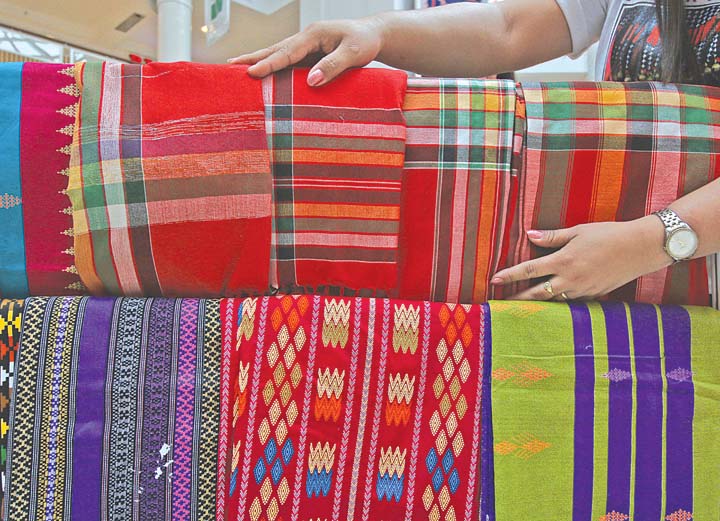Conclusion
LAST month the Bases Conversion and Development Authority announced it has remitted to the National Treasury a total of P5.22 billion, “the highest amount generated by the agency so far.”
Add P413 million and that becomes the total funding the government must shell out to maintain the Philippines’s status as the world’s top abaca-producing country.
More so, for the Philippines to be able to catch up with the growing demand for abaca in the global market, it must shell out P5.633 billion.
Such is the assessment of the Philippine Fiber Development Authority (PhilFida) in its newly crafted “Philippine Abaca Roadmap 2018 to 2022” (Roadmap).
The Roadmap, a copy of which was obtained by the BusinessMirror, points to a government vision of a “progressive” Philippine fiber industry that produces “the world’s best-quality fiber to supply global demands for renewable, sustainable and environment-friendly products to achieve the country’s inclusive growth.”
However, programs and interventions aimed at tripling the country’s abaca output to 221,238 metric tons (MT) in the next four years would require a budget equivalent to the net income Petron Corp. posted in the first quarter of last year.
Under the Roadmap, PhilFida would need P1.753 billion this year for all the necessary inventions it plans to roll out to hike abaca production. Another P1.894 billion is needed by 2019 and P904.426 million in 2020. By 2021, about P992.717 million is required and only P88.605 million in 2022.
Expansion
THE government intends to expand abaca plantations in the country to 238,666 hectares from the current 180,302 hectares, the Roadmap said.
The PhilFida would expand abaca plantations by 39,364 hectares this year, by 10,000 hectares in 2019 and 9,000 hectares in 2020, the Roadmap added.
The PhilFida is targeting to rehabilitate nearly 50,000 hectares. of abaca plantation in four years beginning with 30,000 hectares this year.
Next year, about 10,000 hectares are targeted to be rehabilitated. About 9,000 hectares are targeted to be rehabilitated in 2020.
“The huge increase in abaca plantation area is aimed to accommodate the demands on abaca fiber, especially the pulp sector,” the Roadmap read. “To cater to the increasing demand for abaca fibers, vast hectare of abaca farms [that were] cleaned from abaca diseases, old and less-productive abaca farms, are targeted to be rehabilitated nationwide.”
The attached agency of the Department of Agriculture (DA) would expand plantations in the Bicol region and Eastern Visayas—the top abaca-producing regions in the Philippines. The PhilFida would rehabilitate 89,558 hectares of abaca-growing areas in the Bicol region and 19,214 hectares in Eastern Visayas.
“Extensive abaca expansion and rehabilitation efforts will be undertaken from 2018 to 2019 to meet the targeted 238,666 hectares of total abaca areas by 2022. Bulk of the expansion and rehabilitation activities will be conducted in Regions 5 and 8 and in the regions of Mindanao,” the Roadmap read.
Production
THE Roadmap indicated that the rehabilitation and expansion of abaca plantations would hike output to 76,385 MT this year; 79,576 MT in 2019; 117,519 MT in 2020, 176,715 MT in 2021; and 216,761 MT in 2022.
The annual abaca output of the Philippines is pegged at 72,734.71 MT.
“In terms of targets, a total of 69,364 hectares in 2018 and 44,167 hectares in 2019 will be planted to reach an estimated total abaca fiber demand of 160,444 MT in 2020 with an increase of 12 percent annually,” the Roadmap read. “Corporations and farmers have committed to plant abaca in more areas depending on the availability of planting materials.”
The PhilFida, as cited in its Roadmap, expects that by 2022, with the targeted farm expansion and rehabilitation of 146,248 hectares, an estimated fiber production of 216,761 MT will be attained.
To reach its targeted output, the PhilFida would need at least 69.36 million of planting materials this year; 30.92 million next year and 30.92 million in 2020.
“[The main problems] of the PhilFida are its dependence on tissue culture planting materials, low seedbank seedling production and disease-infected planting materials. Currently, the PhilFida can only produce a maximum of 500,000 planting materials versus a requirement of 146.28 million,” the Roadmap said. “It would take the industry about 292 years to acquire said requirement.”
To address this problem, the PhilFida would shift to abaca seed-derived planting materials from tissue culture production.
“Use abaca seed-derived planting materials in response to the needs of the clients. In order to cover the 146.26-million planting material requirement, a total of 4.17 tons of seeds are needed [based] on an assumption of 35,000 seeds per kilogram,” the Roadmap said.
Interventions
THE attached agency of the DA plans to establish more nurseries per region and encourage local nursery operators and local government units to go into the production of abaca seedlings.
The PhilFida would also eradicate abaca diseases like bunchy-top, brat mosaic and mosaic and replant the crop in disease-free areas.
“To address the problem of the abaca industry on virus diseases the development and introduction of new abaca varieties possessing resistance to virus diseases shall be pursued through conventional breeding and modern biotechnology,” the Roadmap said.
It added that the ongoing research projects of the University of the Philippines Los Baños-Institute of Plant Breeding and Visayas State University on multilocational trial of newly developed disease-resistant abaca hybrids will be continued and so with the ongoing project of PhilFida on the development of transgenic abaca possessing resistance to bunch-top disease.
Techniques
THE agency said funds would be needed to improve abaca trade performance for its
fiber processing and utilizing program and for research and development.
“The production of abaca fiber is dependent on the processing techniques done manually using the traditional stripping knives or mechanically through the use of fiber extraction machines,” the Roadmap read. Citing 2012 fiber statistics, the Roadmap said the present level of mechanization computed as percent machine-extracted fiber to total bailing is 13.6 percent.
To increase fiber production, the Roadmap shall establish 1,996 units of an abaca stripping center and drying shed as common service facilities. This move will require a budget of P399.2 million. By the year 2020, additional 3,114 units will be established with a budgetary requirement of P622.8 million.
The PhilFida, under the Roadmap, would also distribute stripping knives and improved hand-stripping devices totaling 620 units and 840 units by 2018 and 2020, respectively. This will require a budget of about P7.095 million for 2018 and P10.7 million for 2020.
With these guidelines and expected government support, the country can only hope the Philippine abaca, known to many as Manila hemp, would continue to get stronger as an industry.
Image credits: Nonie Reyes






































2 comments
that’s not abaca in the photo. that’s actually young rattan used to make a basket.
really?